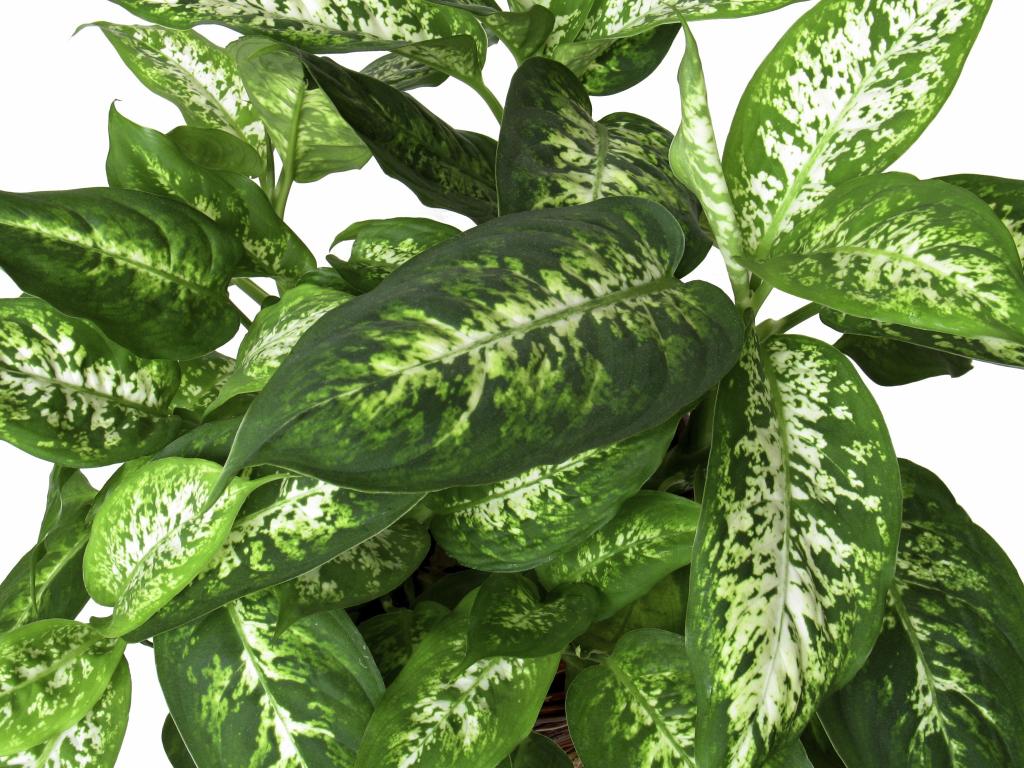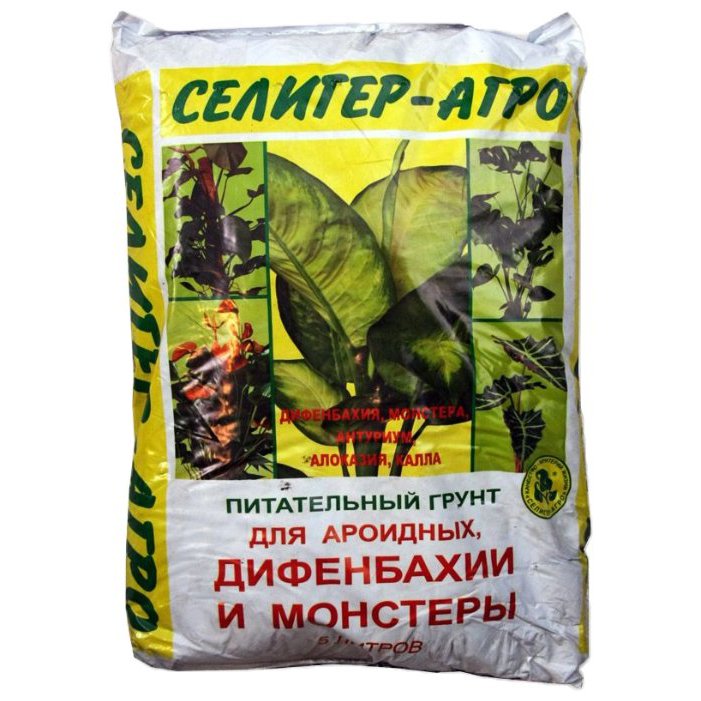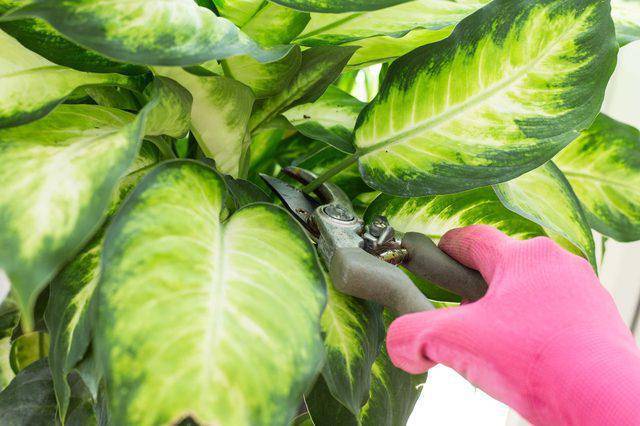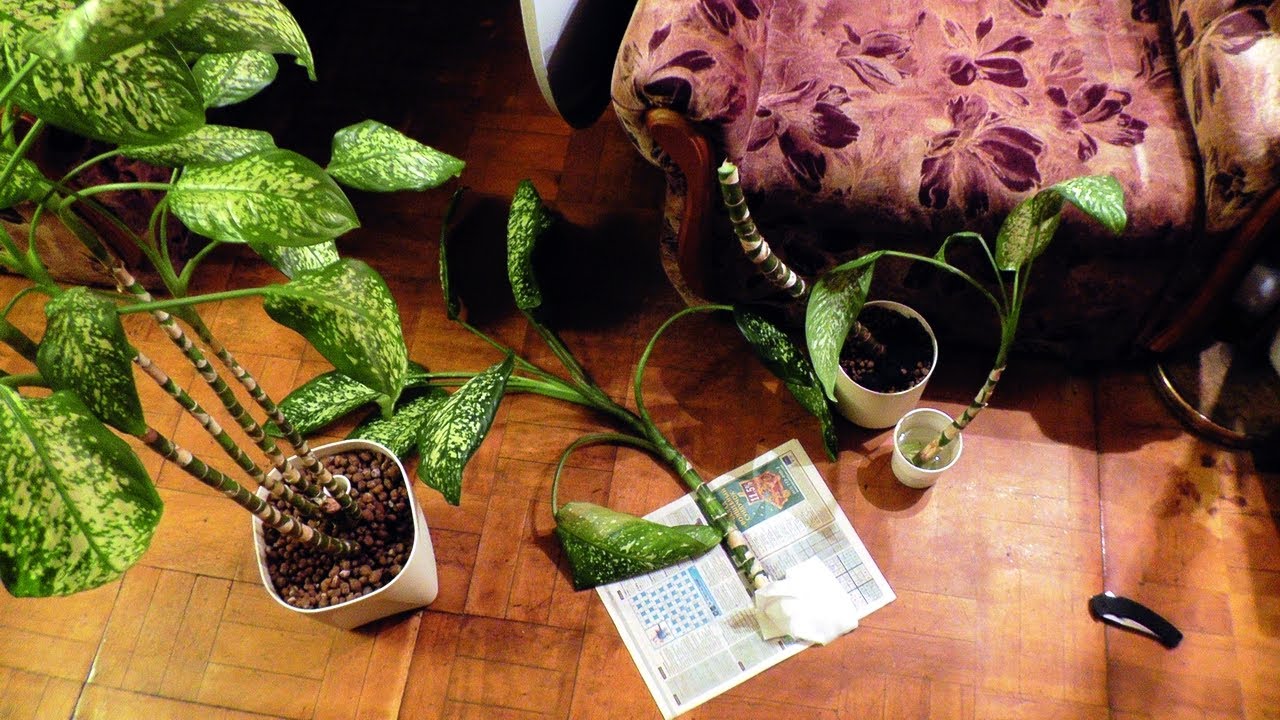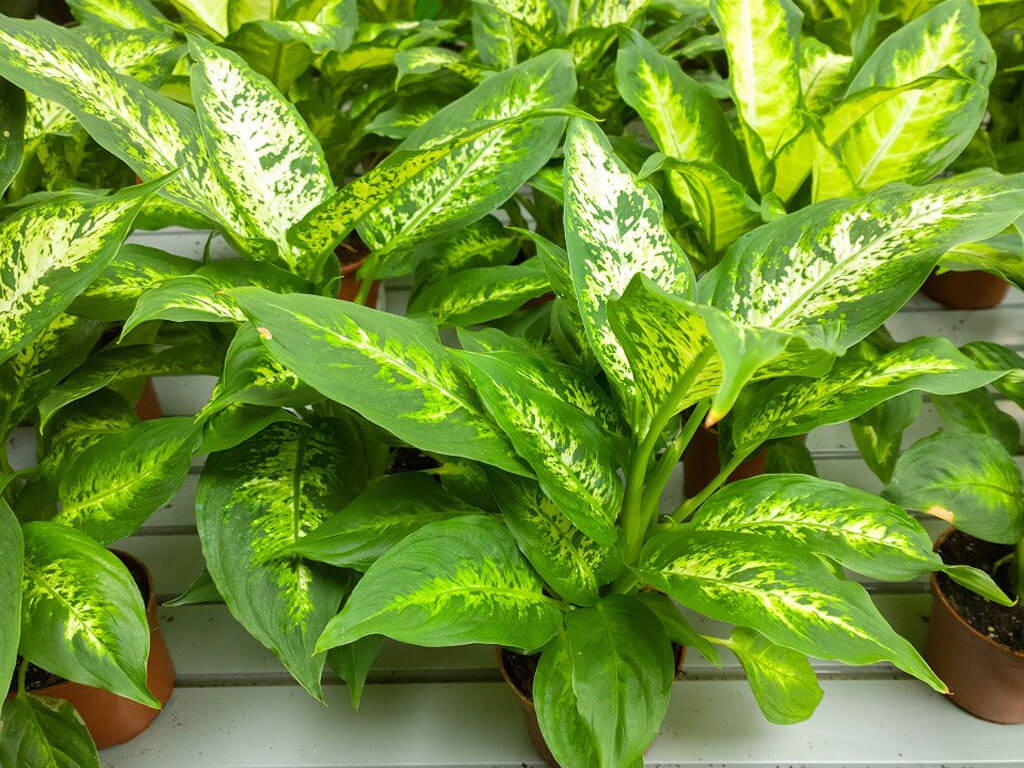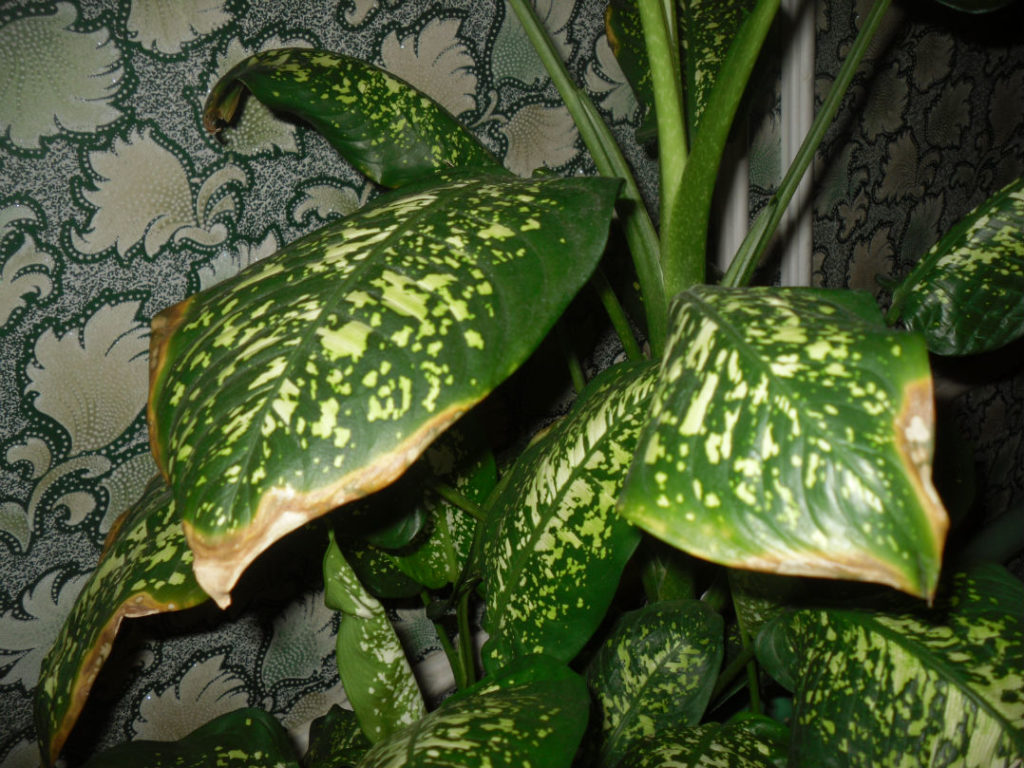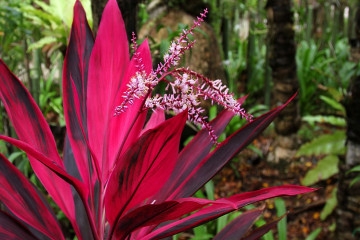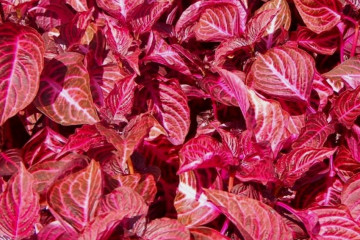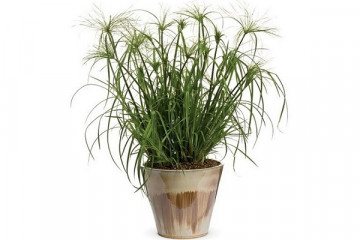Dieffenbachia flower - home care
Content:
- What does dieffenbachia look like, which family does it belong to
- Dieffenbachia flower: home care
- Features of care in winter, dormant period
- When and how dieffenbachia blooms
- Pruning
- How dieffenbachia reproduces
- How to transplant a Dieffenbachia flower
- Possible growing problems and diseases
- Signs and superstitions
Plants native to the tropics require specific care when grown in mid-latitudes, even indoors. This also applies to the dieffenbachia flower. It will not be possible to obtain a healthy and high-quality plant without observing agrotechnical methods.
What does dieffenbachia look like, which family does it belong to
A common feature of dieffenbachia is a thick and powerful stem that bears equally large variegated oval leaves. It is worth noting that the juice of the flower contains a dangerous poison.
Common varieties
In nature, there are at least 50 types of dieffenbachia, and a huge number of varieties have been bred by scientists. The most popular among them are those that have an interesting, not monochromatic color:
- Dieffenbachia spotted Compact - has dark green leaves with small splashes of white.
- Dieffenbachia variety Camilla - the foliage of the plant is almost completely white.
- Green Magic - the bright green foliage of this flower has a beautiful light center.
In addition to variegated varieties, there are also plants with a solid green color.
Healing properties
Dieffenbachia spotted is a poisonous plant, even if the juice gets on the skin, it causes burning and discomfort. However, the flower also has positive properties, for example, it perfectly cleans the air in the room from any toxins and chemical impurities.
Dieffenbachia flower: home care
At home, dieffenbachia needs to be properly looked after and an optimal microclimate in the room should be maintained. Only in this case it will be possible to achieve high decorativeness and absolute health of the plant.
Temperature
Dieffenbachia is a flower that loves warmth and absence of drafts. In summer, the optimum temperature for a plant is + 20 ... +26 degrees. In winter, thermometer readings should not fall below +16 degrees. If the air in the room becomes cooler than 10 degrees Celsius, the plant may not tolerate this, and its roots will rot.
Lighting
Although the flower tolerates shade well, it is best to provide it with enough light. When grown in the shade, the decorativeness of dieffenbachia leaves decreases. In the summer, it is better to shade the pots with plantings so that burns from direct sunlight do not form on the foliage.
Watering
A prerequisite for good flower development is regular watering. A significant drying out of the soil should not be allowed. In the warm season, watering should be frequent and abundant, and during the dormant period - rare.
Spraying
When the air in the room is very dry, the dieffenbachia foliage begins to turn yellow and dry out.To prevent such a situation, it is necessary to carry out frequent spraying of the foliage.
Humidity
Dieffenbachia loves high air humidity, because it is home to the tropics. The main method of increasing humidity is daily spraying of foliage with settled water. In winter, in dry air, when the batteries are running, the flower will feel uncomfortable.
Priming
In the wild, the flower grows on well-moistened soils with a high humus content. The basis of the soil should be sod land. You can prepare the soil yourself. Additionally, you will need peat, river sand and humus. Charcoal or crushed brick will drain well.
Top dressing
In the warm season, you need to feed the flower 1 time in several weeks. You can purchase a ready-made mixture for variegated plants or use complex mineral formulations for fertilization.
Features of care in winter, dormant period
From the end of September to the onset of warmth, and this happens around March, daylight hours are significantly reduced. During this period, diffinbachia practically does not spend energy on growth and development. This gives the right to significantly reduce watering and completely remove fertilizing.
When and how dieffenbachia blooms
With perfect care, the plant will bloom at home, but this can negatively affect the growth and development of the bush. To prevent this from happening, many gardeners cut off the inflorescences that have appeared, preventing them from blooming. In this regard, the flowering of dieffenbachia can be seen quite rarely.
Pruning
Pruning is an important step in growing a plant. You can form a flower at any time of the year, the main thing is not to harm the plant. Basic rules for pruning dieffenbachia:
- All parts of the plant are poisonous, and the trunk is no exception. The place of the cut of the flower must be blotted with a rag and the resulting juice removed.
- Gloves are necessarily used in the work, after which the hands are thoroughly washed.
- To exclude the development of dieffenbachia diseases, you need to cut the stems with a sharp knife or scissors, disinfected with alcohol, and the cut site should be treated with crushed coal.
How dieffenbachia reproduces
There are several ways to breed dieffenbachia.
Germinating seeds
This method is practically not used, since the plant rarely blooms. Female inflorescences have a partially closed flowering part. For this reason, pollination is done manually. When the seeds appear, they are immersed in water for a day, after which they are sown in moist soil. The plantings are left under the film and wait for the sprouts to give several leaves. At this moment, you can carry out a pick.
Rooting cuttings
To obtain a cutting, the top of the plant is cut off and placed in water or peat. The main thing in this matter is to regularly spray the cutting and prevent direct sunlight from falling on it. When the roots appear about 2 cm in size, you can move them into the ground.
Air layering
An incision is made on the stem, to which wet moss is attached. The material must be constantly moistened. When roots appear with moss, the stem is cut off and planted in a new pot.
How to transplant a Dieffenbachia flower
Transplanting should only be done when the roots have completely filled the pot. It is not difficult to determine this, the roots will look out of the drainage holes of the container. Sometimes a transplant is required several times a year. The best period for such work is from the end of February to the end of May.
The pot needs to be picked up more than the previous one. A good drainage layer is laid on the bottom of the container.A new loose substrate of weak acidity is poured into the pot, which consists of crushed sphagnum, leafy earth, peat and river sand.
Possible growing problems and diseases
Failure to comply with basic rules during care often leads to the fact that the plant gets sick or is attacked by pests.
Dieffenbachia sheds buds and leaves
This situation suggests that the plant should be fed. With a lack of nutrients, the foliage will begin to fall off, and the buds that appear will not have time to bloom.
Leaves turn pale
This is due to non-compliance with the temperature regime. Either the flower was in the cold, or stood in a draft. It may be lacking nutrients in the soil.
The tips of the leaves dry
If young leaves begin to dry out, first of all this indicates insufficient watering. Maybe the plant is grown in a cold room.
The lower leaves fall
The fall of the lower foliage is natural and therefore no action is required.
Pests
Bush dieffenbachia is often attacked by such pests as aphids, scale insects, thrips. Insects are usually removed mechanically. To combat pests, a soap solution is used, which is used to wash the foliage, and then wash everything off with clean water. If the contamination is severe, chemicals are indispensable.
Signs and superstitions
Dieffenbachia can be called one of the most magical plants, many signs are associated with it. In ancient times, the flower was used to torture slaves, so it is believed that such a plant cannot bring anything good. Dieffenbachia was not planted in their homes, not only because of its toxicity, but also because the flower promised misfortune and death to all residents.
Getting a healthy dieffenbachia flower is not that difficult. The main thing in growing it is to pay attention to moisture and feeding in the warm season.
